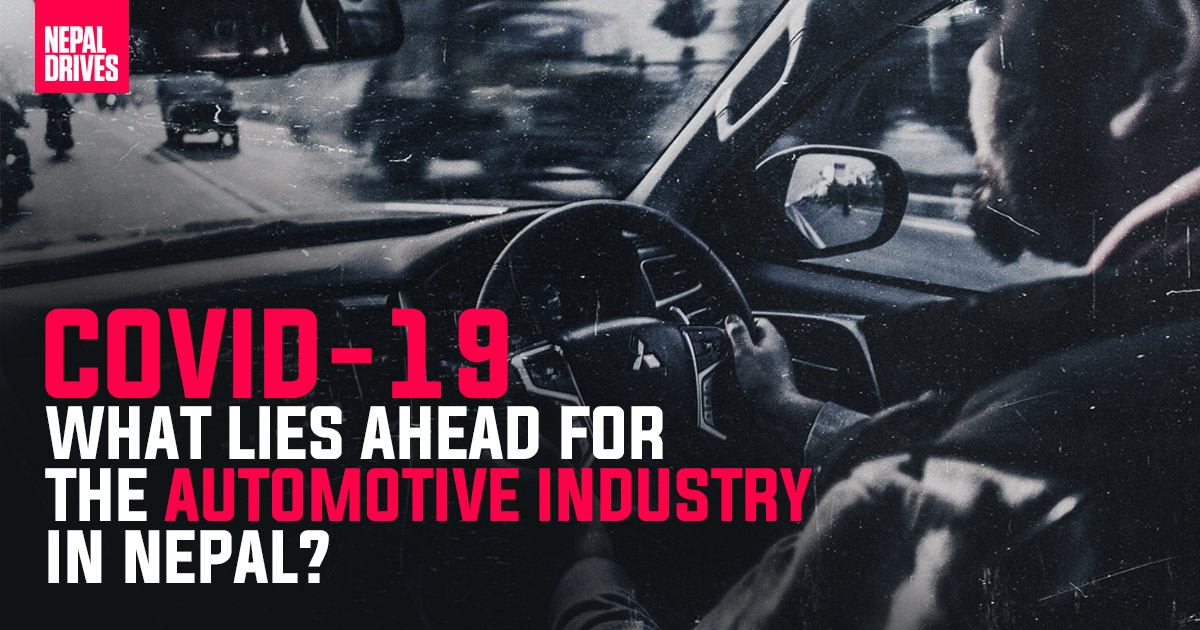The number of total positive cases of Covid-19 on day 41 increased by 16 new cases, bringing the toll to 75. On day 77, the total number of cases has increased to 3762 with 314 new infected in one day. With an increase in the number of tests taking place, the number of infected has increased significantly. Still, these numbers do little to reflect the crippling effect that the virus has had in the Nepalese economy and to its people.
Along with trade, tourism, and remittance, the auto industry looks to be headed for a sharp slump. But is there a silver lining to this dark cloud?At first glance, it does not look all that promising. Like most things in Nepal, Nepal’s automotive industry is dictated by the tune sung by the Indian auto industry. So the news of a 15% dip in the Indian car manufacturing industry (a 28-year low) does not bode well for us.However, there is good news from our neighbors up north. According to reports, sales in Wuhan have reached 96 percent of what it was during the pre-lockdown period, within weeks of restrictions being lifted. Predictions on the Indian Auto Industry taking the same route have been made based on this trend.The primary premise of this prediction is that people will want the assurance of personal transport. Indian public transport (like in Nepal) has been totally stopped, along with their ride-sharing offerings like Ola and Uber. They have no mode of transportation to get them from one place to another, even in case of an emergency. The unavailability of these services has made people think about the necessity of owning a personal vehicle.Furthermore, even after certain normalcy is attained, there is always the fear of the contraction of viruses. It is very likely that people will avoid a shared means of transport like public vehicles for a very long time now. This lockdown has exposed the vulnerability of being dependent on public transport, even more so than before. It is this fear and desire for personal transport that hints towards the increase in vehicle sales, especially that of two-wheelers and small cars. Used or pre-owned vehicles may also see an increase in demand due to the desire to limit spending.The question here is; is there a possibility of a similar trend transpiring in the Nepalese market? There are a few things to consider here. Purchasing a personal mode of transportation in Nepal is very difficult due to the tax structure. For the majority of families in Nepal, purchasing a car is likely to be the second largest investment of their lives. For many that dream is shot down to owning a motorcycle. The larger proportion of the total population purchasing motorcycles and cars is a distant dream.The economic divide in the country is well defined and clearly apparent. Without delving too much into it, we’ll just state the obvious. The people who can afford the purchase a vehicle already have one, some who have several. Then the economic distance between the ones who can and cannot afford to purchase a vehicle is significant.However, we cannot completely negate the possibility of an upturn in the purchase of vehicles in Nepal, and here is why. There are many people, who till now, have pushed back their purchase of a vehicle for various reasons. There are people saving up for a better model, waiting for their children to complete their SLC (SEE), or more realistically, saving money. For such people, this could be the necessary push that will lead them to purchase a vehicle. There could also be consumers with large disposable income choosing to spend on vehicles rather than an outdoor activity like travel or experiential tours.
Herein comes the role of the government. While there are many aspects that the government needs to look into to help the country recuperate from this major setback, in terms of helping get the automotive sector back on its feet.COVID-19 has disrupted the automotive industry at a time when this industry was already reeling under pressures of tight liquidity situation and inept governmental controls. Even before the lockdown, industry insiders were quite pessimistic about the growth. And the recently announced budget has further deepened the woes of this sector. Although many of us expected the recently announced Budget to uplift the mood of the automobile sector and support the emergence of electric vehicles, the sentiment is still very low, especially for the EV sector (Read: Budget 2020/21: A Severe Blow to the EV Industry)Since we are a dealer-based market, this lockdown will further increase the level of debt and choke sales. Automobile dealers have been unable to sell vehicles during the lockdown and they face a significant burden to clear their inventories. The dealers will soon face liquidity issues because of the prolonged lockdown. Also, the market remains constricted with a high taxation structure discouraging prospective buyers. Hence, a significant amount of support is needed from the government to improve the financial health of this sector.According to a report by Deloitte, a prolonged truncation of consumer demand as countries work through various lockdown scenarios may spark a global recession, leading to widespread loss of consumer confidence, significantly impacting automaker revenues and profitability. In response, auto companies can make strategic decisions to exit unprofitable global markets and vehicle segments.Having said this, it is still difficult to correctly predict the economic repercussions that the COVID-19 fiasco will have on the country and on the world. For now, the best we can do is hope for the best and look for a positive outcome. Until then, we hope the world finds the resilience to battle this pandemic.Stay Safe.
Published Date: 2020-06-08 20:47:52
Post Comments
Most Read This Week












